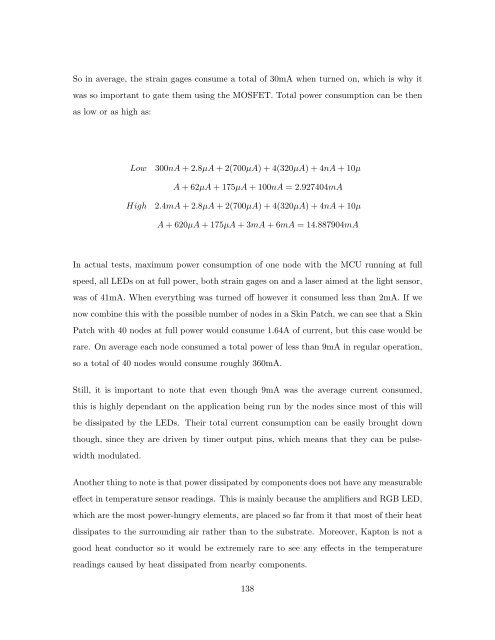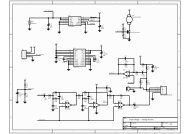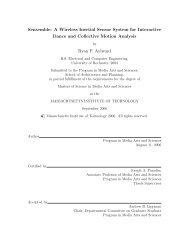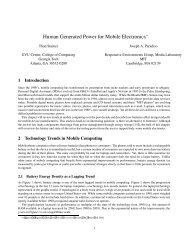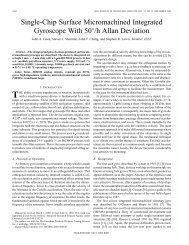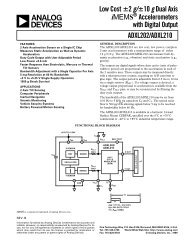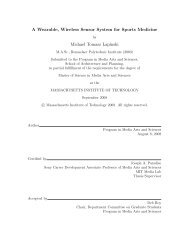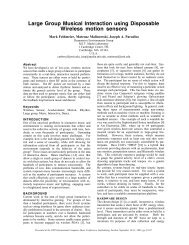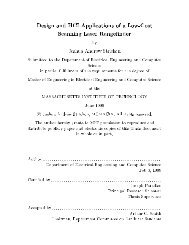S.N.A.K.E.: A Dynamically Reconfigurable Artificial Sensate Skin ...
S.N.A.K.E.: A Dynamically Reconfigurable Artificial Sensate Skin ...
S.N.A.K.E.: A Dynamically Reconfigurable Artificial Sensate Skin ...
You also want an ePaper? Increase the reach of your titles
YUMPU automatically turns print PDFs into web optimized ePapers that Google loves.
So in average, the strain gages consume a total of 30mA when turned on, which is why it<br />
was so important to gate them using the MOSFET. Total power consumption can be then<br />
as low or as high as:<br />
Low 300nA + 2.8µA + 2(700µA) + 4(320µA) + 4nA + 10µ<br />
A + 62µA + 175µA + 100nA = 2.927404mA<br />
High 2.4mA + 2.8µA + 2(700µA) + 4(320µA) + 4nA + 10µ<br />
A + 620µA + 175µA + 3mA + 6mA = 14.887904mA<br />
In actual tests, maximum power consumption of one node with the MCU running at full<br />
speed, all LEDs on at full power, both strain gages on and a laser aimed at the light sensor,<br />
was of 41mA. When everything was turned off however it consumed less than 2mA. If we<br />
now combine this with the possible number of nodes in a <strong>Skin</strong> Patch, we can see that a <strong>Skin</strong><br />
Patch with 40 nodes at full power would consume 1.64A of current, but this case would be<br />
rare. On average each node consumed a total power of less than 9mA in regular operation,<br />
so a total of 40 nodes would consume roughly 360mA.<br />
Still, it is important to note that even though 9mA was the average current consumed,<br />
this is highly dependant on the application being run by the nodes since most of this will<br />
be dissipated by the LEDs. Their total current consumption can be easily brought down<br />
though, since they are driven by timer output pins, which means that they can be pulse-<br />
width modulated.<br />
Another thing to note is that power dissipated by components does not have any measurable<br />
effect in temperature sensor readings. This is mainly because the amplifiers and RGB LED,<br />
which are the most power-hungry elements, are placed so far from it that most of their heat<br />
dissipates to the surrounding air rather than to the substrate. Moreover, Kapton is not a<br />
good heat conductor so it would be extremely rare to see any effects in the temperature<br />
readings caused by heat dissipated from nearby components.<br />
138


